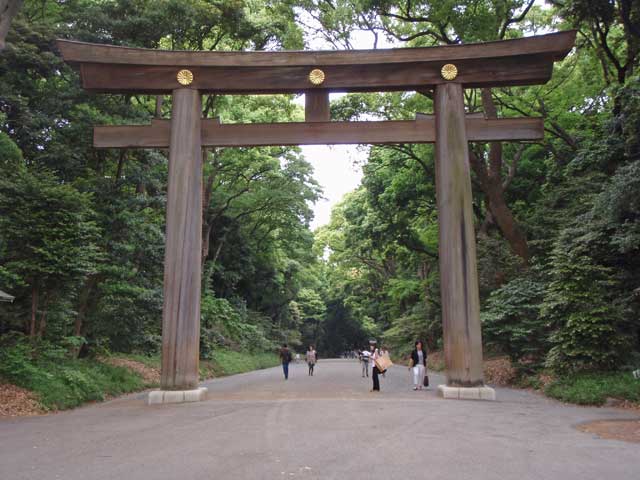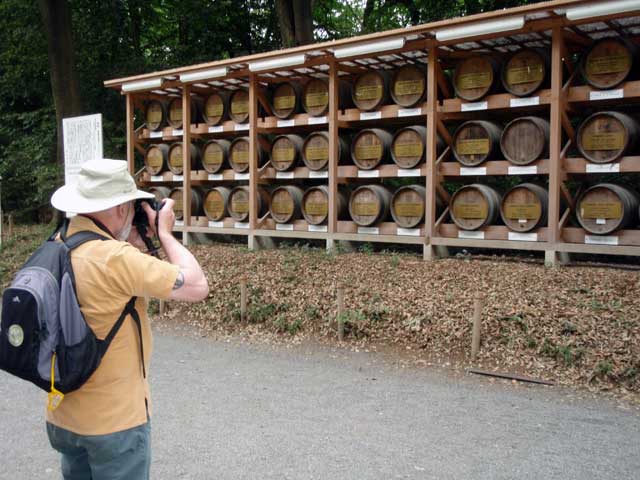
A classic Japanese breakfast.

This morning we had a classic (using that word a lot here) Japanese breakfast that was very satisfying and are now getting ready to forge out for today’s plans.
After breakfast, we walked to a nearby tourism office. We found out the night before that our tour of the Tsukiji Fish Market had to be cancelled as the docent was in the hospital with chest pains, and no other docent was available. So Mike queried the staff, but alas no comparable tour was available. After stopping at the 7-Eleven store ATM for cash, we walked up the shopping street, through the Kaminarimon gate, to the Sensō-ji temple and spent some time wandering the grounds.
We then hopped on a subway, then train, to western Tōkyō in search of a statue of a dog. Mike knew of the statue and had brought with him a homemade dog biscuit from a vendor at the Falls Church farmers market. The vendor also knew of the statue, honoring Hachikō who waited faithfully for his master at the subway station, for nine years after the master died. So armed with dog biscuit we found the statue and Mason placed the dog biscuit before Hachikō with ceremony while we recorded the moment with our cameras.
Our next scheduled event was the aesthetics tour that we were to meet one stop back-tracking on the train. Consulting the map, we decided the distance was walkable with abundance of free time on our hands. We found our meeting spot (the big GAP store across from the train station) and went looking for lunch. The restaurant that Mike’s app recommended proved to be elusive, so we picked a restaurant up on the second floor where we had another round of beers with our lunches – ordered by Mike as there was no English on the menu. We still had time on our hands, so we went next door to the Nescafé Café and had coffee until our appointed meeting time.
The aesthetics tour (arranged through Context Travel) was led by John Tran, a British ex-pat and son of Vietnamese immigrants who grew up in London. From our meeting point, we walked into Yoyogi Park to the Meiji shrine, which honors the Emperor Meiji and his Empress Shoken who guided Japan during the period when it re-engaged the world after two centuries of isolation. From there we walked along Omotesandō Street, a major upscale shopping street where John pointed out various buildings and we critiqued their style, while John provided the context around their design.
We parted with John at the Mori Tower, after ascertaining that he was to be our docent for the tour of the National Museum in just over a week. We found a restaurant in the constellation of shops at the foot of the tower that was more Thai than Japanese, but served a California pinot noir that was to my liking. The spring rolls and pad thai were passible, but the mango pudding was definitely a hit.
A couple subway rides delivered us back to Asakusa district where we went directly to bed.

The archway at the entrance to the Meiji Jingu temple grounds - very large, and the path is very wide.

Jonathan taking a shot of the wine offerings. Emperor Meiji introduced French cuisine into the imperial court.

A wedding procession marched by - the bride in white, the groom on her right, and her mother on her left.